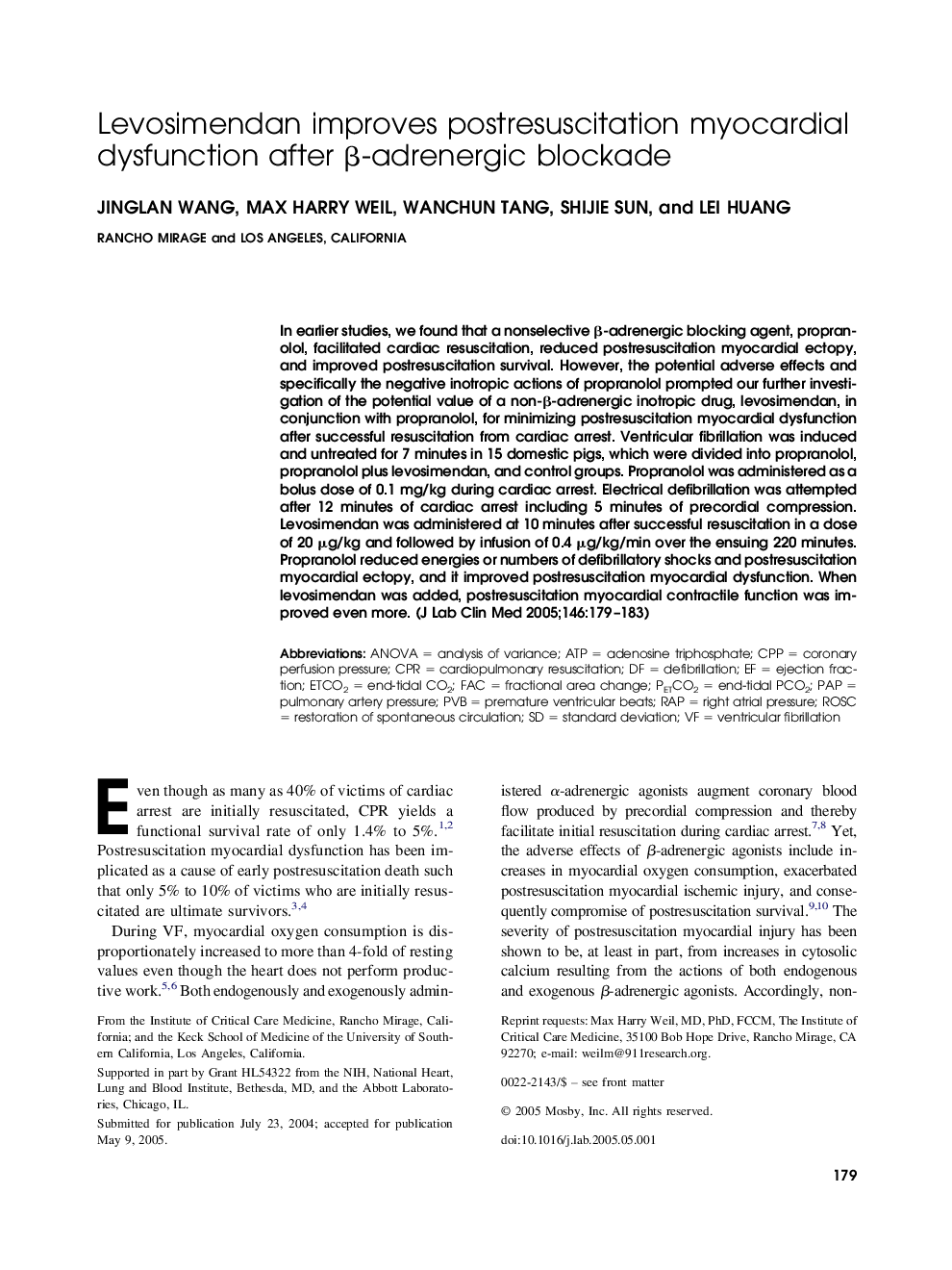| Article ID | Journal | Published Year | Pages | File Type |
|---|---|---|---|---|
| 9296411 | Journal of Laboratory and Clinical Medicine | 2005 | 5 Pages |
Abstract
In earlier studies, we found that a nonselective β-adrenergic blocking agent, propranolol, facilitated cardiac resuscitation, reduced postresuscitation myocardial ectopy, and improved postresuscitation survival. However, the potential adverse effects and specifically the negative inotropic actions of propranolol prompted our further investigation of the potential value of a non-β-adrenergic inotropic drug, levosimendan, in conjunction with propranolol, for minimizing postresuscitation myocardial dysfunction after successful resuscitation from cardiac arrest. Ventricular fibrillation was induced and untreated for 7 minutes in 15 domestic pigs, which were divided into propranolol, propranolol plus levosimendan, and control groups. Propranolol was administered as a bolus dose of 0.1 mg/kg during cardiac arrest. Electrical defibrillation was attempted after 12 minutes of cardiac arrest including 5 minutes of precordial compression. Levosimendan was administered at 10 minutes after successful resuscitation in a dose of 20 μg/kg and followed by infusion of 0.4 μg/kg/min over the ensuing 220 minutes. Propranolol reduced energies or numbers of defibrillatory shocks and postresuscitation myocardial ectopy, and it improved postresuscitation myocardial dysfunction. When levosimendan was added, postresuscitation myocardial contractile function was improved even more.
Keywords
ROSCRAPCPPPVBFACPAPETCO2PetCO2End-tidal CO2Adenosine TriphosphateATPCardiopulmonary resuscitationCPRDefibrillationstandard deviationanalysis of varianceANOVArestoration of spontaneous circulationfractional area changePremature ventricular beatscoronary perfusion pressurePulmonary artery pressureRight Atrial PressureVentricular fibrillationEnd-tidal PCO2ejection fraction
Related Topics
Health Sciences
Medicine and Dentistry
Medicine and Dentistry (General)
Authors
Jinglan Wang, Max Harry Weil, Wanchun Tang, Shijie Sun, Lei Huang,
